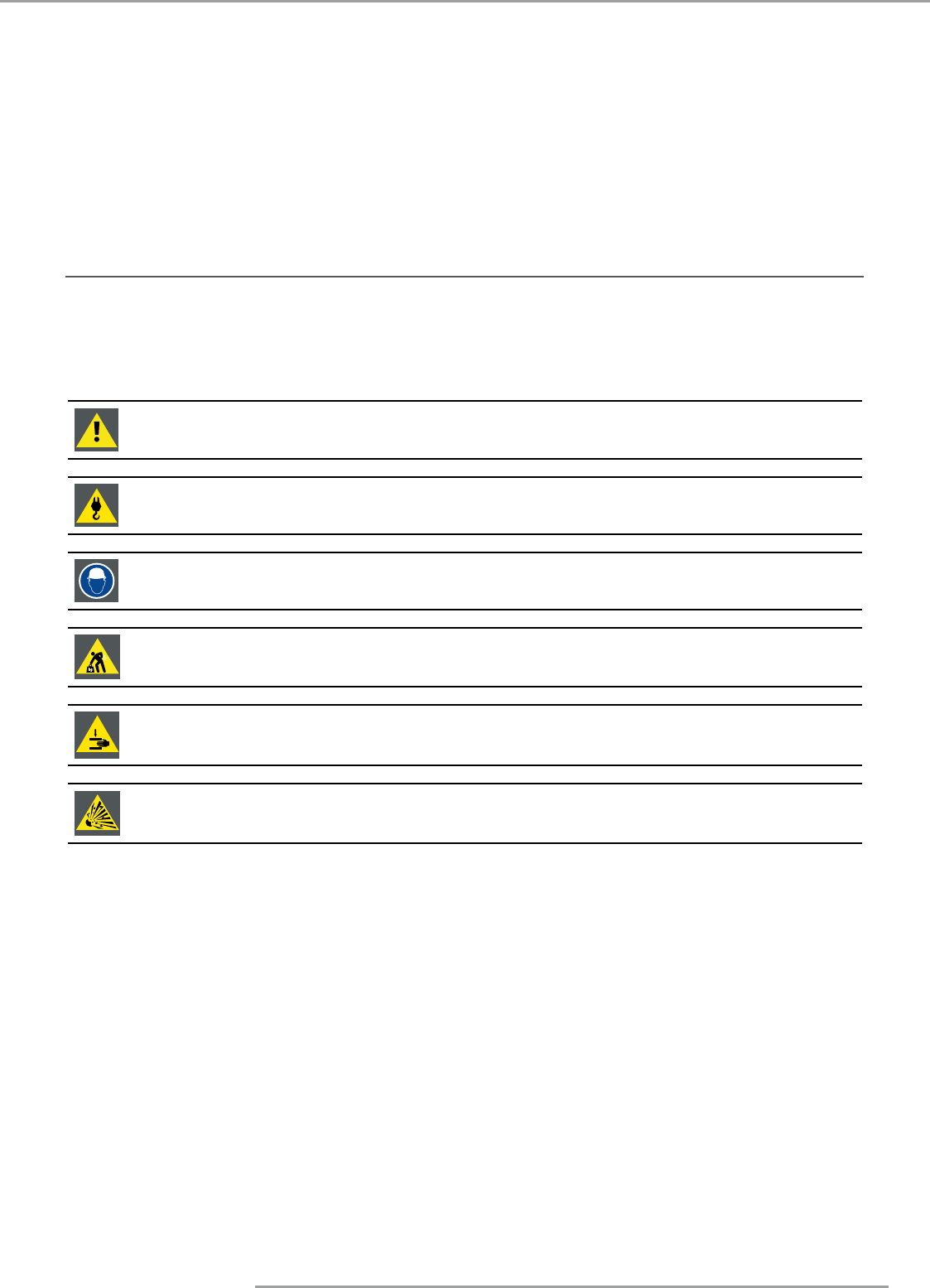
PFWX-51B/PFWU-51B 10/02/2014
1
1.Safety
1.
SAFETY
About this chapter
Read this chapter attentively. It contains important information to prevent personal injury while installing and using a
PFWX-51B/PFWU-51B projector. Furthermore, it includes several cautions to prevent damage to the PFWX-51B/PFWU-51B
projector. Ensure that you understand and follow all safety guidelines, safety instructions and warnings mentioned in this
chapter before installing your PFWX-51B/PFWU-51B projector. After this chapter, additional “warnings” and “cautions” are
given depending on the installation procedure. Read and follow these “warnings” and “cautions” as well.
1.1
General considerations
When referring in this document to the term “PRESENT SERIES” means that the content is applicable for following Barco
products:
•
PFWX-51B
•
PFWU-51B
WARNING: Ensure you understand and follow all the safety guidelines, safety instructions, warnings and
cautions mentioned in this manual.
WARNING: Be aware of suspended loads.
WARNING: Wear a hard hat to reduce the risk of personal injury.
WARNING: Be careful while working with heavy loads.
WARNING: Mind your fingers while working with heavy loads.
CAUTION: High pressure lamp may explode if improperly handled.
General safety instructions
•
Before operating this equipment please read this manual thoroughly and retain it for future reference.
•
Installation and preliminary adjustments should be performed by qualified Barco personnel or by authorized Barco service
dealers.
•
All warnings on the projector and in the documentation manuals should be adhered to.
•
All instructions for operating and use of this equipment must be followed precisely.
•
All local installation codes should be adhered to.
Notice on safety
This equipment is built in accordance with the requirements of the international safety standards IEC60950-1,
EN60950-1, UL60950-1 and CAN/CSA C22.2 No.60950-1, which are the safety standards of information technology equipment
including electrical business equipment. These safety standards impose important requirements on the use of safety critical
components, materials and insulation, in order to protect the user or operator against risk of electric shock and energy hazard
and having access to live parts. Safety standards also impose limits to the internal and external temperature rises, radiation
levels, mechanical stability and strength, enclosure construction and protection against the risk of fire. Simulated single fault
condition testing ensures the safety of the equipment to the user even when the equipment’s normal operation fails.


















